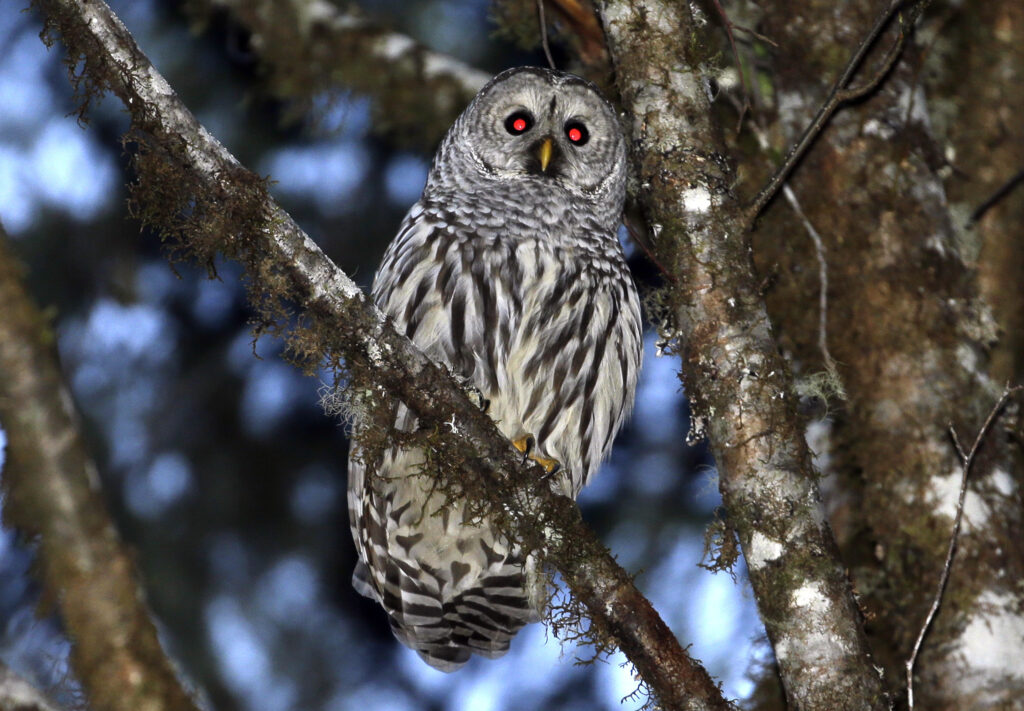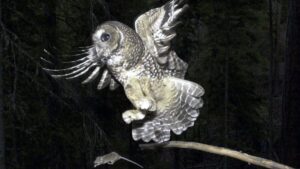A plan to kill hundreds of thousands of barred owls is moving forward.
The Senate rejected a resolution to block the program, The Center Square reported Friday.
The U.S. Fish and Wildlife Service (FWS) proposed killing half a million barred owls across Washington, Oregon, and California to save the region’s northern spotted owls. Opponents said it’s cruel, expensive, and won’t work long-term.
The estimated cost tops $1 billion, with about 453,000 owls targeted.
U.S. Fish and Wildlife Service explains need to cull barred owls
FWS explained, via a news release in July 2024, that the northern spotted owls’ population is rapidly declining because it has to compete with the barred owls. The removal would take out less than one-half of 1% of the current North American barred owl population, according to officials.
“Barred owl management is not about one owl versus another,” Service Oregon Office state supervisor Kessina Lee said via the news release. “Without actively managing barred owls, northern spotted owls will likely go extinct in all or the majority of their range, despite decades of collaborative conservation efforts.”
A Northern Spotted Owl flies after an elusive mouse jumping off the end of a stick on May 8, 2003, in the Deschutes National Forest near Camp Sherman, Ore. (File photo: Don Ryan, AP)
Past efforts to save spotted owls focused on protecting the forests where they live, sparking bitter fights over logging but also helping slow the birds’ decline, according to The Associated Press (AP). Some wildlife advocates said the removal plan is a diversion from needed forest preservation.
On FWS’s website, barred owls are referred to as an invasive species. FWS stated the strategy will stop the decline of northern spotted owls before it’s too late, adding that action needs to be taken quickly.
Tom Wheeler, director of the Environmental Protection Information Center, a California-based conservation group, told The AP that because barred owls are aggressive hunters, removing them could also help other West Coast species that they’ve been preying on, such as salamanders and crayfish.
Washington’s Commissioner of Public Lands opposes federal plan
However, Washington’s Commissioner of Public Lands Hilary Franz is questioning the federal plan. Franz spoke virtually to a group of wildlife advocates, highlighting her concerns.
“How can the U.S. Fish and Wildlife Service guarantee that only barred owls will be targeted? How could we prevent the surviving barred owls from simply recolonizing and repopulating the very areas were trying to preserve?” Franz said.
Franz added the proposal pours too many resources into saving one species.
“How can we justify spending nearly a quarter of a billion dollars on one species when our funding and resources are limited and so many other species are struggling to survive like our salmon,” she said.
Franz also had ethical concerns.
“Killing off one species to safeguard another can’t be the only solution, especially considering that barred owls are also protected under the Migratory Bird Treaty Act,” she said.
If the proposal is adopted, FWS would receive a permit under the Migratory Bird Treaty Act. It would then designate trained professionals to shoot down the barred owls in less than half of the areas where spotted and barred owls co-exist. Public hunting would not be allowed, but interested Tribes, federal and state agencies, companies, and specific landowners would be considered.
“Barred owl removal, like all invasive species management, is not something the service takes lightly,” Lee said. “The service has a legal responsibility to do all it can to prevent the extinction of the federally listed northern spotted owl and support its recovery, while also addressing significant threats to California spotted owls.”
Opponents, as reported by The AP, said the mass killing of barred owls would cause severe disruption to forest ecosystems and could lead to other species — including spotted owls — being mistakenly shot.
This story was originally published on July 3, 2024. It has been updated and republished since then.
Contributing: Charlie Harger and Aaron Granillo, KIRO Newsradio; Matthew Brown, The Associated Press
Julia Dallas is a content editor at MyNorthwest. You can read her stories here. Follow Julia on X here and email her here.




